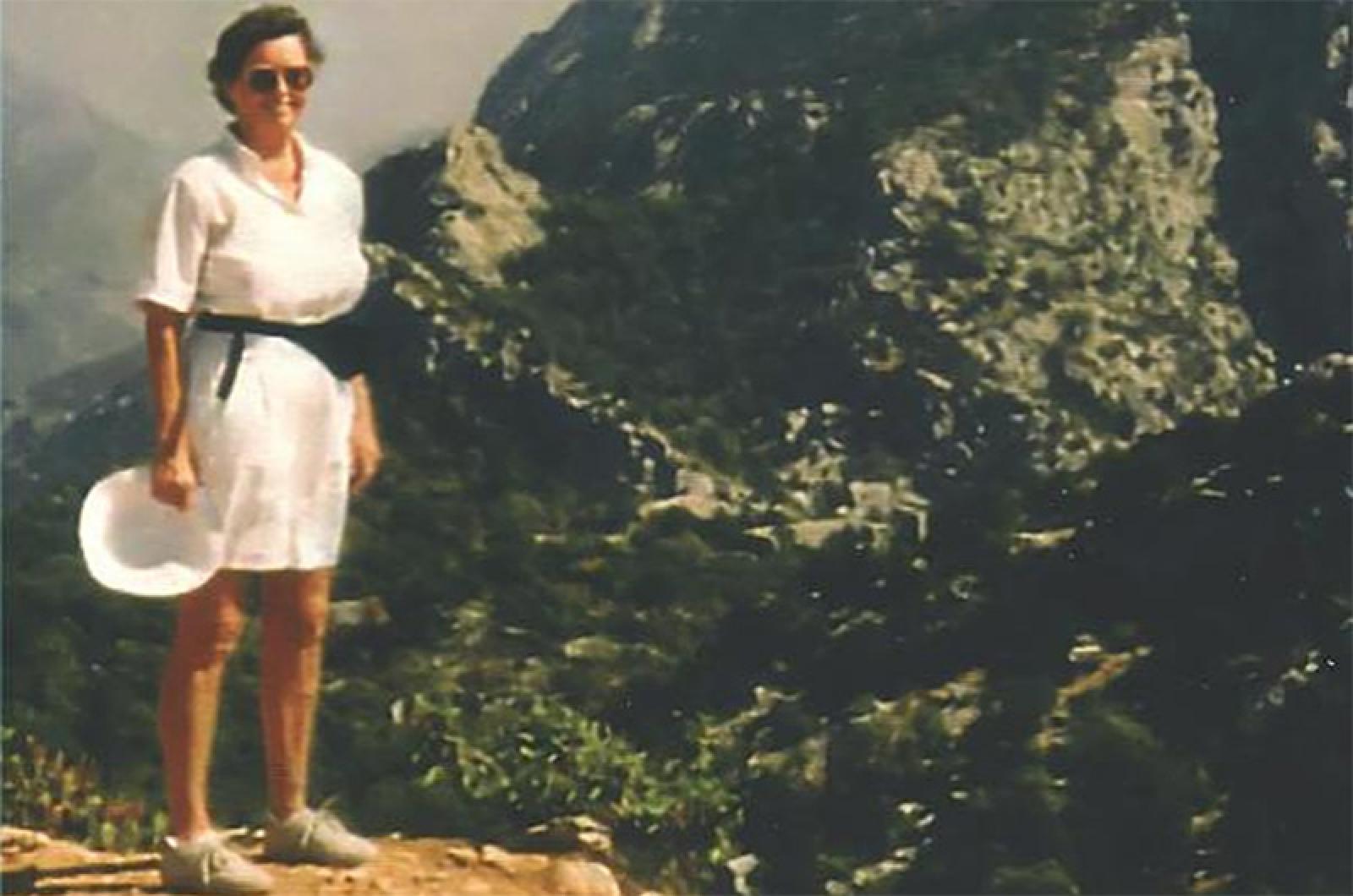Around the World in Thirty Years by Shirley W. Mayhew, Music Street Press, 2019, 153 pages, $21.
There are a few inherent perils in writing travel memoirs, of course. Some are caught up in the intensely subjective nature of the task, which sits uncomfortably somewhere between dragging your reluctant audience through a narration of your photo albums and embarking on a detailed description of the dream you had last night.
And some of the perils are more objective. In their composition, travel books depressingly tend to devolve into cribbing from outdated Baedekers, blurry photos from lifeless package tours, and the serving up of lukewarm and self-serving memories.
So Vineyard author Shirley Mayhew has perils to the left of her and perils to the right of her in her new book, Around the World in Thirty Years. She does not fall to prey to these traps, however, and instead strides forth with humor, insight and a zest for travel that is infectious enough to make even the most committed armchair traveler consider dusting off the passport and heading for parts unknown.
In fewer than two dozen short chapters, she relates favorite stories from a lifetime of travel, taking readers with her and her family and friends along on stories about camping in Colorado, trekking in Nepal and Kashmir, and going on safari in Kenya and Tanzania.
She travels to Finland, Morocco and all across the United States. She visits the Galapagos Islands and Peru. She recounts a slightly nerve-wracking trip to the Soviet Union at the height of the Cold War, when, as she recalls, people on the Vineyard had built underground bomb shelters.
“Did we want to visit the country we were most afraid of?” she asks, but she goes just the same.
And so many times, in so many places, she encounters the kind of simple human goodness that travelers often report, whether it’s the young couple she meets while eating enormous crab claws in a restaurant in Tokyo or the local historian in Tisbury, England, who gives fossilized coral as a souvenir of visiting the namesake region of the Vineyard’s Tisbury.
She likens seeing the Burma of 1988 to traveling back in time; she enjoys a quiet and spiritual moment at the top of Castel Dinas Bran in Wales; and when she climbs Mount Kilimanjaro in 1982, the experience subtly changes her very perception of the word: “Ten hours after leaving Horombo Hut we arrived back at Kibo Hotel with aching knees and calves, memories of pain and joy, and a tremendous sense of achievement,” she writes. “Never again will the word ‘Kilimanjaro’ be only part of a story title for me. I climbed it.”
But as far-ranging as Mrs. Mayhew’s book is, it ends up confirming what a travel writer observed nearly 1000 years ago: all travel is ultimately inner travel. If you have the generosity and sense of adventure that makes a truly good traveler, those qualities will shine out of your stories even if the most you do is cross your own town.
Mrs. Mayhew has these qualities in abundance, demonstrated by the fact that her book’s most charming chapter is the one closest to home. She rents a small cottage on the south shore of Chilmark and lovingly describes her solitary time there — and the unexpected company she ends up enjoying with a small house mouse.
“Her silent companionship gave me a sense of sharing this house, yet I was unburdened by the demands that might have been made on me by the presence of a human housemate,” she recalls. “She came and went in quiet acceptance of my occupancy, and in gratitude I became less compulsive about cleaning up all the crumbs of my daily existence.”
The quiet wonder of that connection ranks right up alongside all the exotic adventures related elsewhere in the book. It wonderfully reminds us that some travel writers know just what they’re doing.






Comments
Comment policy »